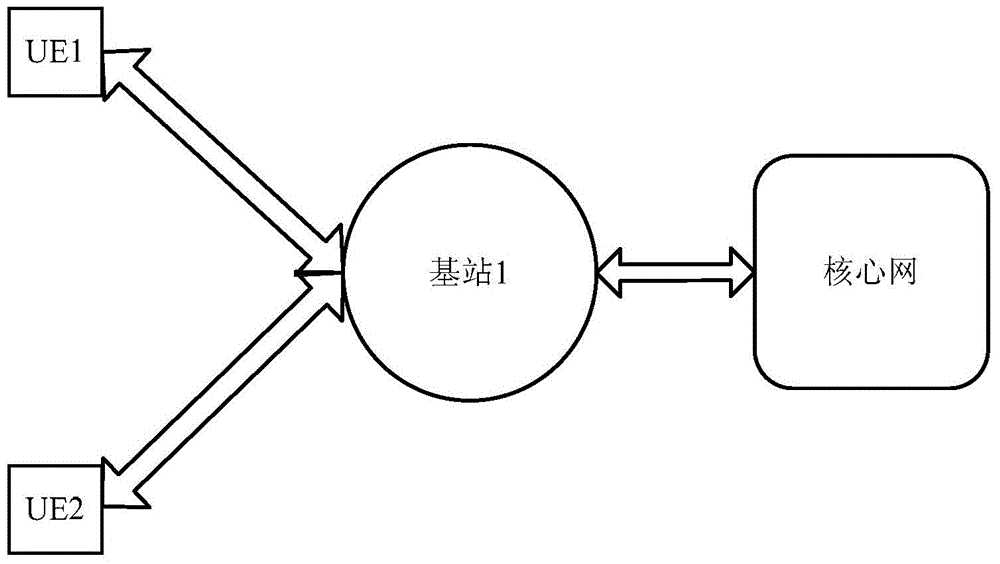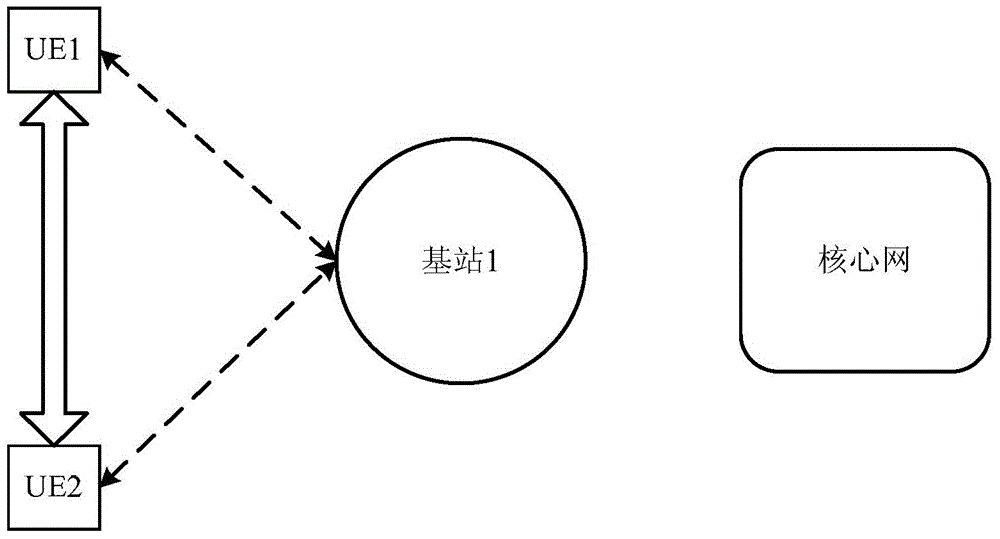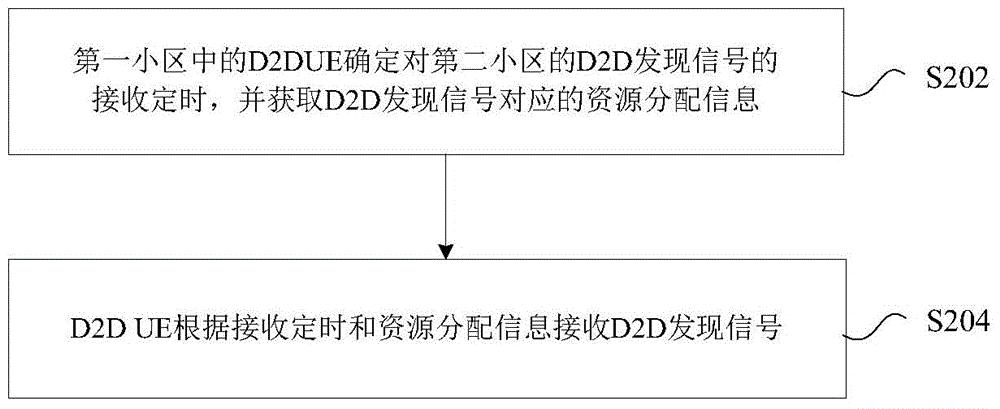D2D communication method and UE
A communication method and a technology for discovering signals, which are applied in the field of communication, can solve problems such as difficult timing synchronization, and achieve the effect of timing synchronization
- Summary
- Abstract
- Description
- Claims
- Application Information
AI Technical Summary
Problems solved by technology
Method used
Image
Examples
Embodiment 1
[0094] In this embodiment, the D2D UE directly detects the synchronization signal of the neighboring cell and obtains the D2D resource allocation information of the neighboring cell, that is, the resource allocation information corresponding to the D2D signal.
[0095] Figure 5 is a schematic diagram of the first implementation principle of D2D discovery signal communication according to a preferred embodiment of the present invention, as shown in Figure 5 As shown, Cell51, Cell52, and Cell53 are cells corresponding to different base stations, respectively, UE54, UE55, and UE56 are UEs belonging to the above three cells, respectively, and signal 57, signal 58, and signal 59 are downlink synchronization signals of the three cells, respectively, Signal 510 and signal 511 are downlink synchronization signals corresponding to Cell52 and Cell53 that UE54 can detect, and signal 512 and signal 513 are D2D discovery signals received by UE54 and corresponding to UE55 and UE56. Where...
Embodiment 2
[0101] In this embodiment, the D2D UE determines the receiving timing of the D2D discovery signal of the neighboring cell through the downlink synchronization signal forwarded by the UE of the neighboring cell.
[0102] Image 6 is a schematic diagram of the second implementation principle of D2D discovery signal communication according to a preferred embodiment of the present invention, as shown in Image 6 As shown, UE64 cannot detect the downlink synchronization signal of the neighboring cell, and needs to determine the receiving timing of the D2D discovery signal of the neighboring cell according to the downlink synchronization signal forwarded by the UE of the neighboring cell. exist Image 6 Among them, Cell61, Cell62, and Cell63 are cells corresponding to different base stations, UE64, UE65, and UE66 are terminals belonging to the above-mentioned three cells, respectively, and signal 67, signal 68, and signal 69 are downlink synchronization signals of the three cells, ...
Embodiment 3
[0135] In this embodiment, the D2D UE obtains the downlink synchronization signal of the neighboring cell by forwarding the downlink synchronization signal of the neighboring cell through the UE in the local cell, and then determines the receiving timing of the D2D discovery signal of the neighboring cell.
[0136] Figure 11 is a schematic diagram of a third implementation principle of D2D discovery signal communication according to a preferred embodiment of the present invention, as shown in Figure 11 As shown, UE113 can detect the downlink synchronization signals of neighboring cells Cell111 and Cell112, but UE114 cannot detect the downlink synchronization signals of neighboring cells Cell111 and Cell112.
[0137] UE113 respectively forwards the downlink synchronization signals of neighboring cells Cell111 and Cell112 on the corresponding uplink time-frequency resources in its corresponding serving cell. The forwarded signal is 1114 in the figure, and only one forwarded si...
PUM
 Login to View More
Login to View More Abstract
Description
Claims
Application Information
 Login to View More
Login to View More - R&D Engineer
- R&D Manager
- IP Professional
- Industry Leading Data Capabilities
- Powerful AI technology
- Patent DNA Extraction
Browse by: Latest US Patents, China's latest patents, Technical Efficacy Thesaurus, Application Domain, Technology Topic, Popular Technical Reports.
© 2024 PatSnap. All rights reserved.Legal|Privacy policy|Modern Slavery Act Transparency Statement|Sitemap|About US| Contact US: help@patsnap.com










